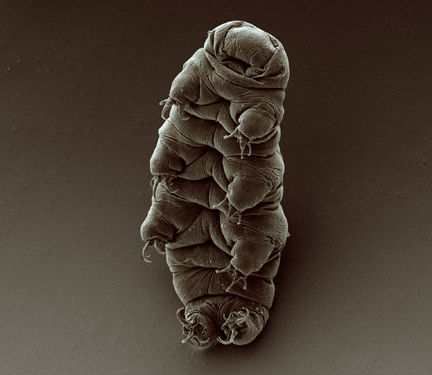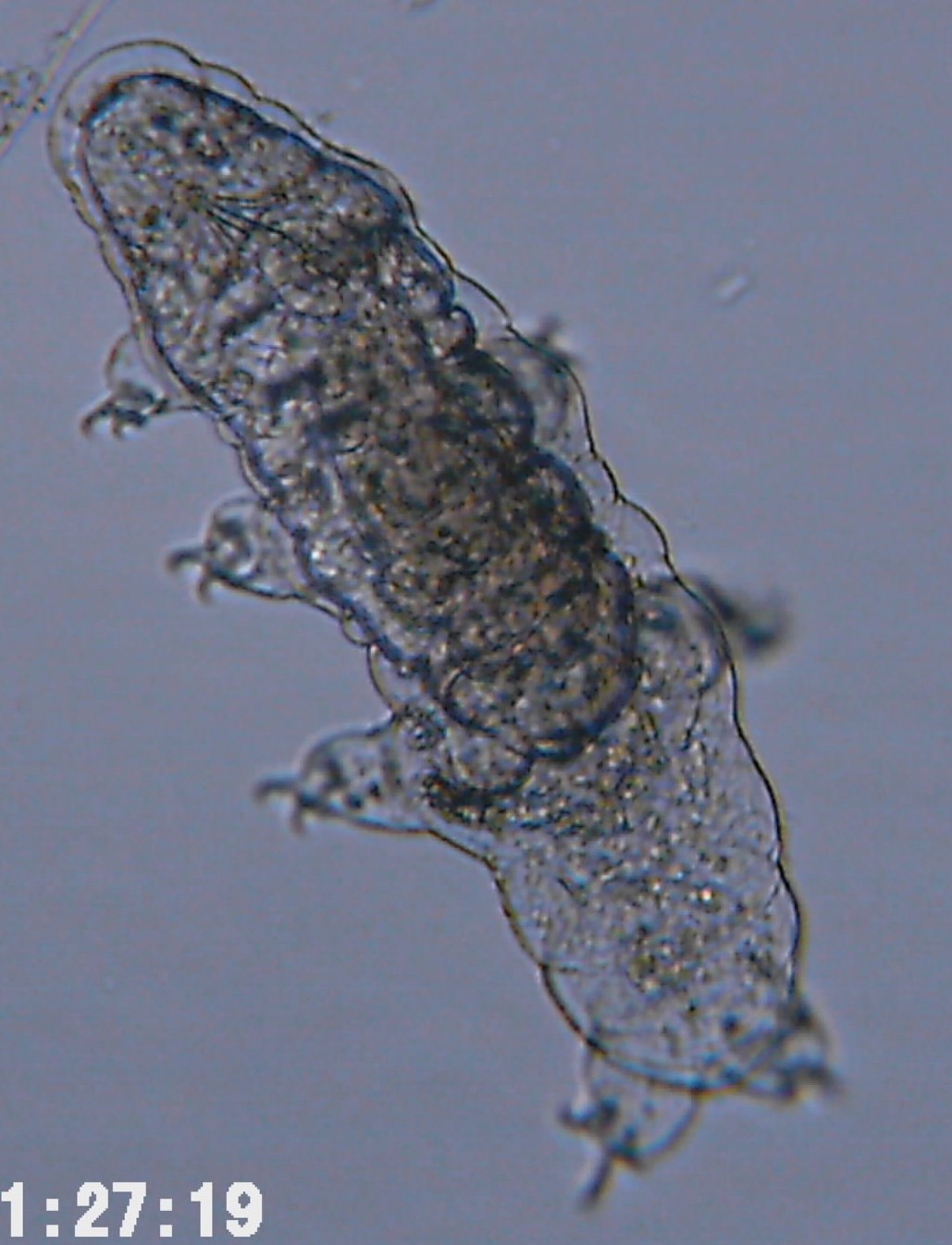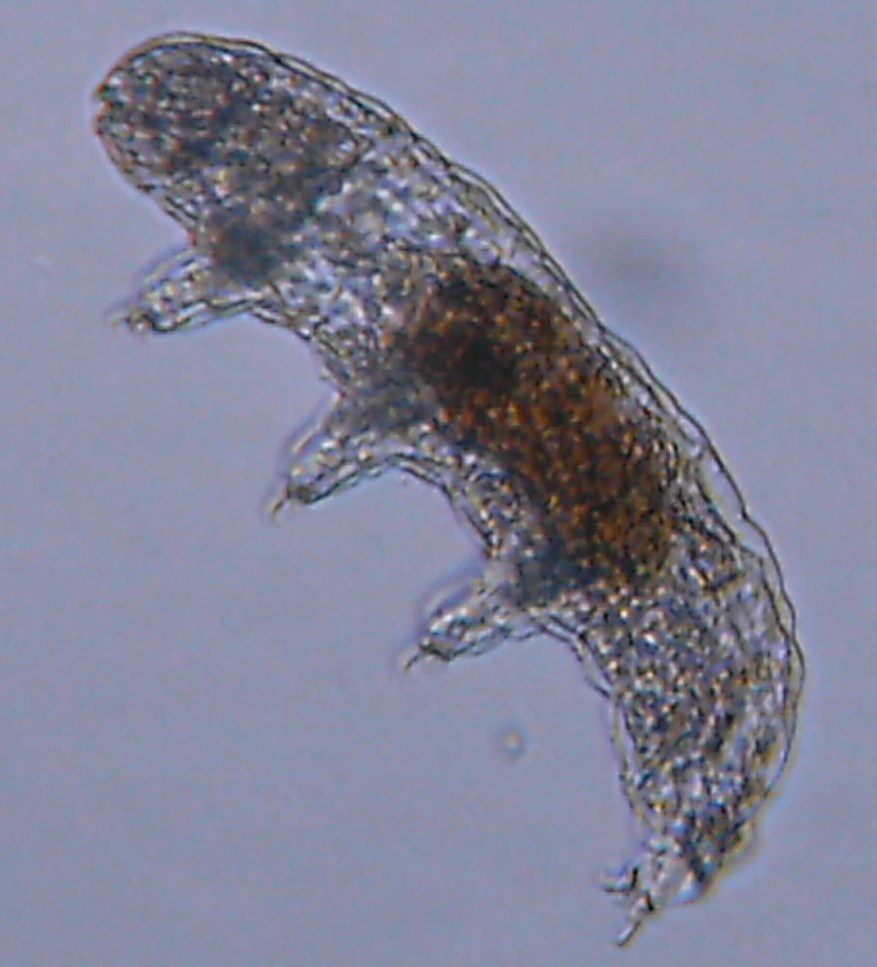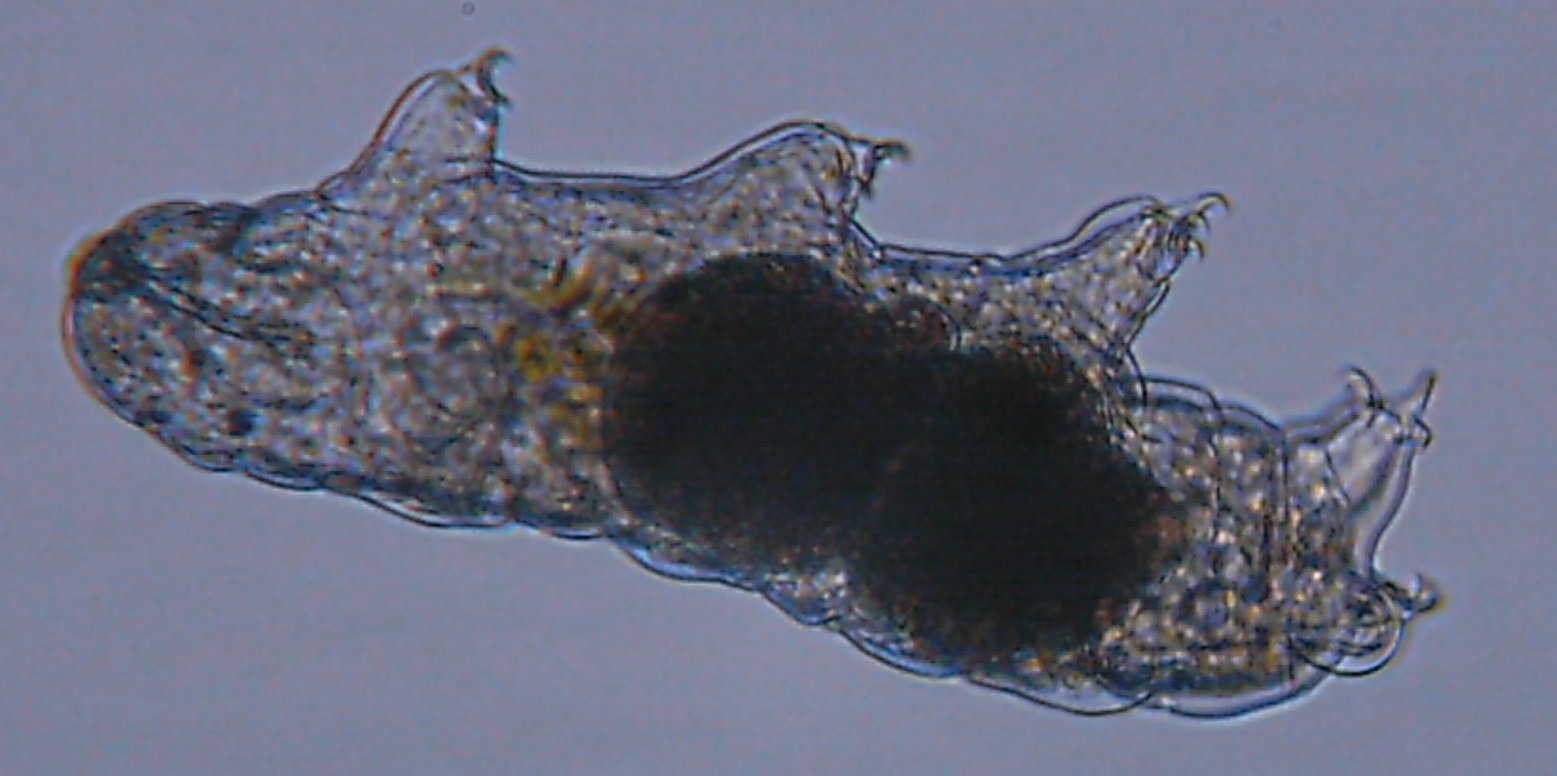Phylum Tardigrada
Common names: tardigrades, water bears
Overview
Tardigrades are tiny organisms ranging in size from 0.1-0.5 mm that have a bear-like appearance, hence their common name �water bears�. They typically have stout bodies with four pairs of legs. The legs terminate in groups of claws, the morphology and number of which is taxonomically important. Terrestrial and freshwater tardigrades have slight segmentation suggested along the body in the form of transverse creases or wrinkles. The head usually possesses a pair of small eyespots and various arrangements of thin, thread-like appendages (cirri and clavae). The mouth is anteriorly positioned and mouthparts are mostly internal and include a pair of stylets and a muscular pharynx. Two orders occur in terrestrial and freshwater environments: Mesotardigrada that possess 6-10 claws on the legs, have cirri and setae-like appendages on the head, and are reddish or whitish in colour, and Eutardigrada that possess 4 modified claws with adhesive disks or pads, the head lacks appendages, and the body is whitish in colour.
Distribution and diversity
Many tardigrades are widely distributed, being reported around the world from tropical to arctic and antarctic latitudes. While present on land and in freshwater, tardigrades also live in the ocean (Order Heterotardigrada). The very wide distribution of terrestrial tardigrades has largely been attributed to the amazing ability of tuns (a resting stage) and eggs to withstand adverse conditions, and the tiny size of these structures, permitting dispersal by wind.
Life cycle
Sexes are typically separate in tardigrades. Mating is varied, with males either depositing sperm into the female receptacle, or beneath the female cuticle. Eggs are typically stuck to objects or are shed into the old skin (exuvium) while moulting. The eggs of terrestrial species possess thick and often ornamented shells. Newly hatched tardigrades resemble adults in appearance, but may possess fewer cirri and/or claws. An unusual characteristic of tardigrades is the manner in which they grow: the number of cells in the body is quite stable and growth follows the increase in size of cells, not their numbers.
Feeding
Herbivorous or predatory tardigrades are fluid feeders and have anteriorly directed mouths. The stylets are used to pierce the plant or animal walls and the fluids are sucked out by a muscular pharynx. Detritivorous tardigrades have ventrally directed mouths and feed on bacteria, algae or decomposing organic matter. Carnivorous tardigrades prey upon similar sized or microscopic organisms such as nematodes, ciliates, bacteria and rotifers.
Ecology
While the biology of these animals is frequently studied, their ecology is still poorly understood. In favourable environments, they can be quite numerous and in moss, up to two million individuals have been reported from just one square metre. Arguably the most extraordinary feature of terrestrial tardigrades is their ability to enter an extraordinarily resistant resting stage: tun. When environmental conditions become unfavourable, tardigrades retract their legs, lose body water, and secrete a thick cuticular envelope. Tardigrade tuns are ametabolic, and will �survive� prolonged periods in environments completely devoid of oxygen. Tardigrade tuns can withstand very extreme conditions including near vacuum atmosphere, -272� to +149�C and are not destroyed by poisons such as ether or ethanol. Tardigrade tuns are reported to have been activated in moss that had been dry for 120 years. When favourable conditions return, the tun dehydrates and the tardigrade body swells, and within an hour or two, the animals is mobile.


Tardigrada
Image credit: � Alejandro Velasco Castrillon
used with permission

Tardigrada
Image credit: � Alejandro Velasco Castrillon
used with permission

Tardigrada
Image credit: � Alejandro Velasco Castrillon
used with permission
References and further information
ABRS Australian Faunal Directory: Tardigrada
Atlas of Living Australia: Tardigrada
Encyclopedia of Life: Tardigrada
Tree of Life: Tardigrada
Identification and Ecology of Australian Freshwater Invertebrates: Tardigrades:










